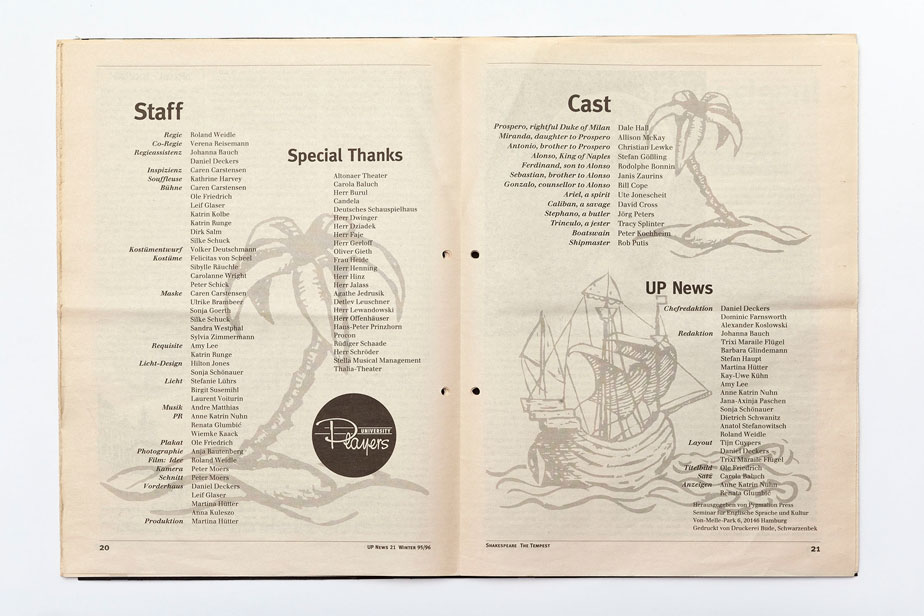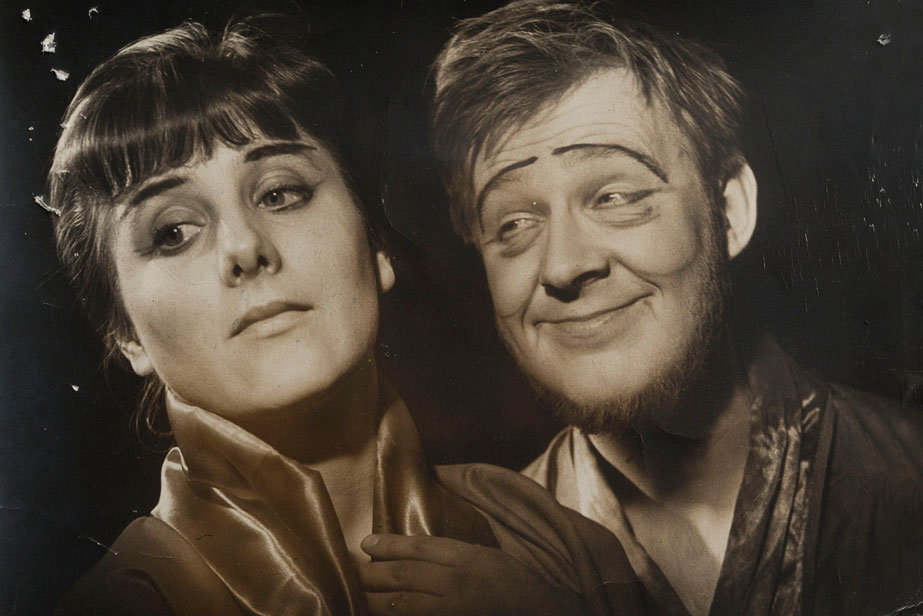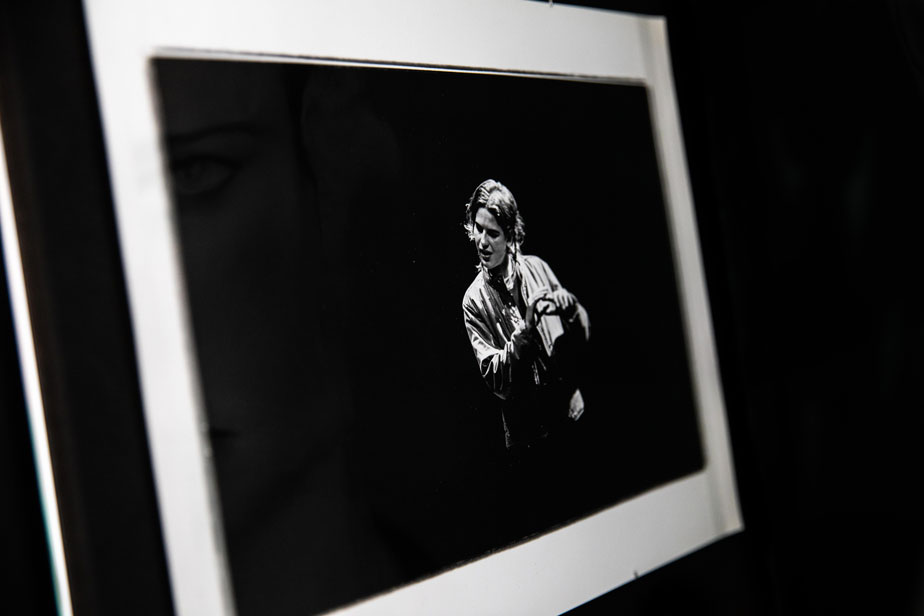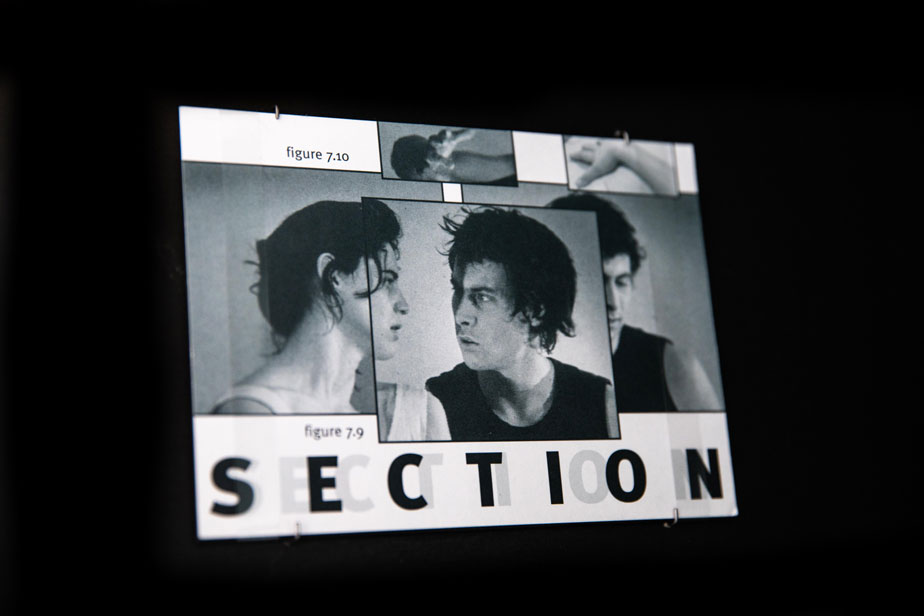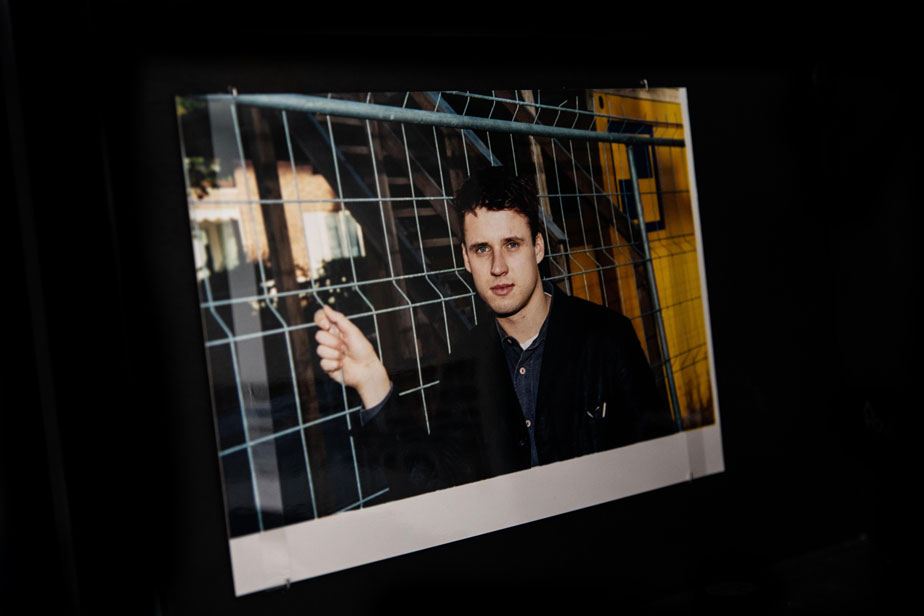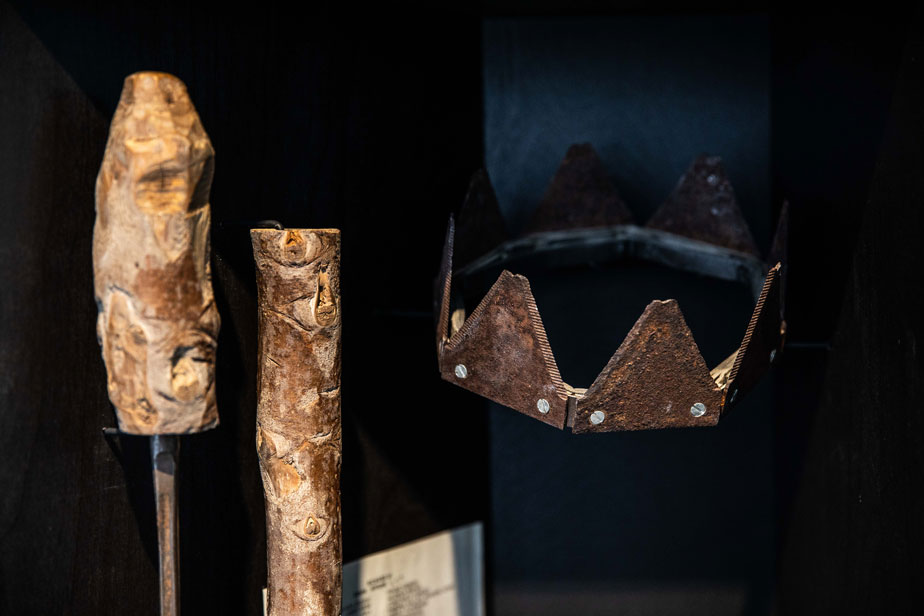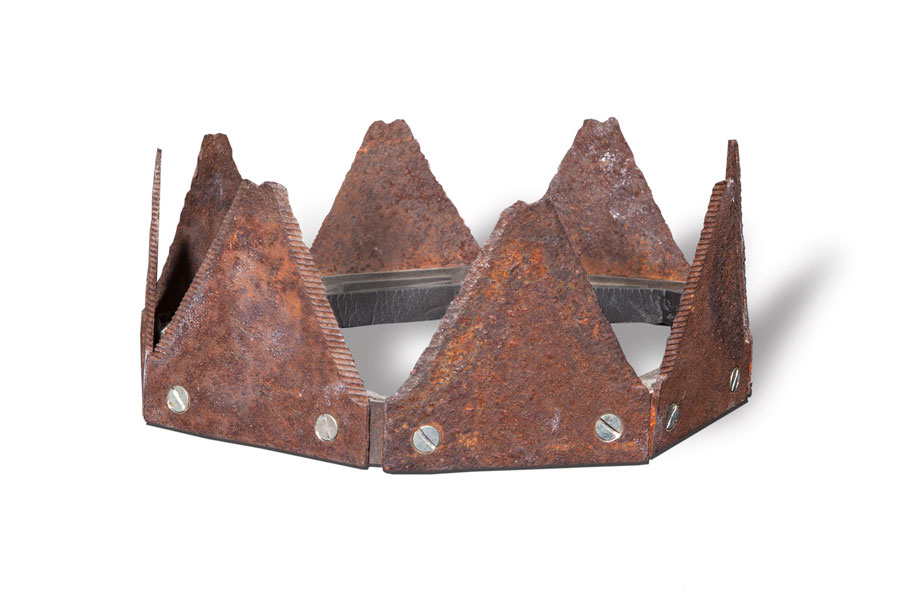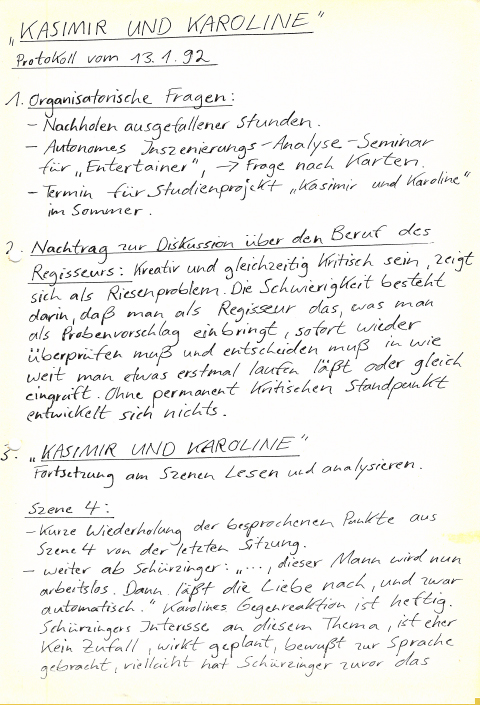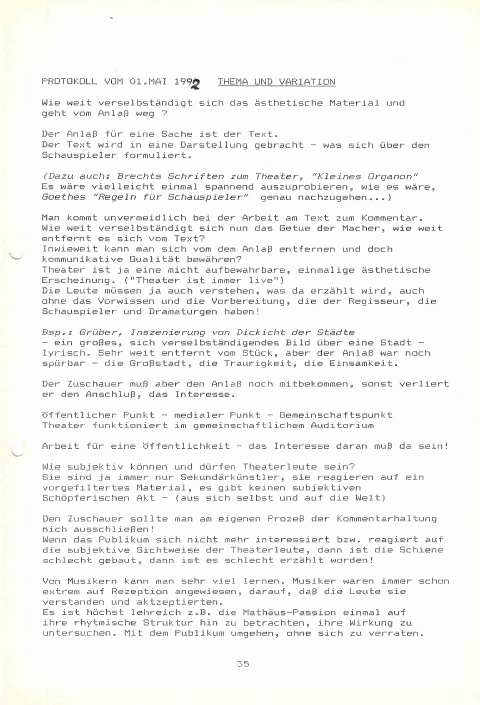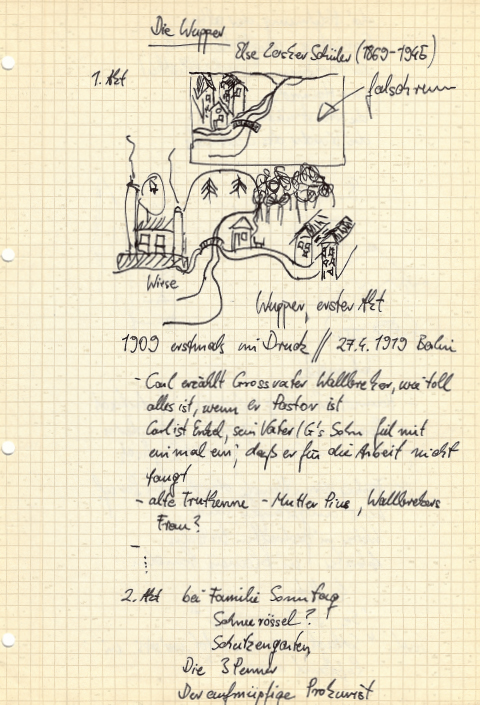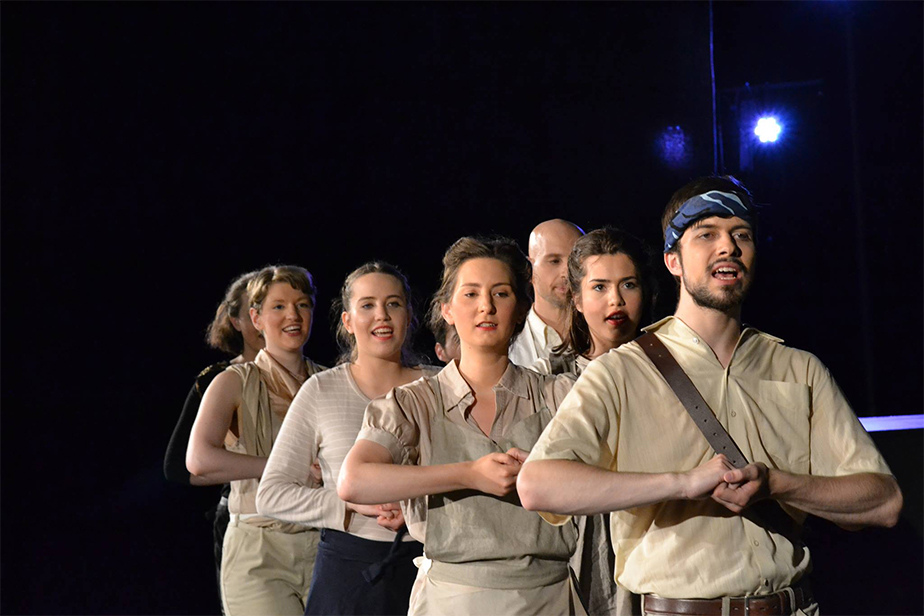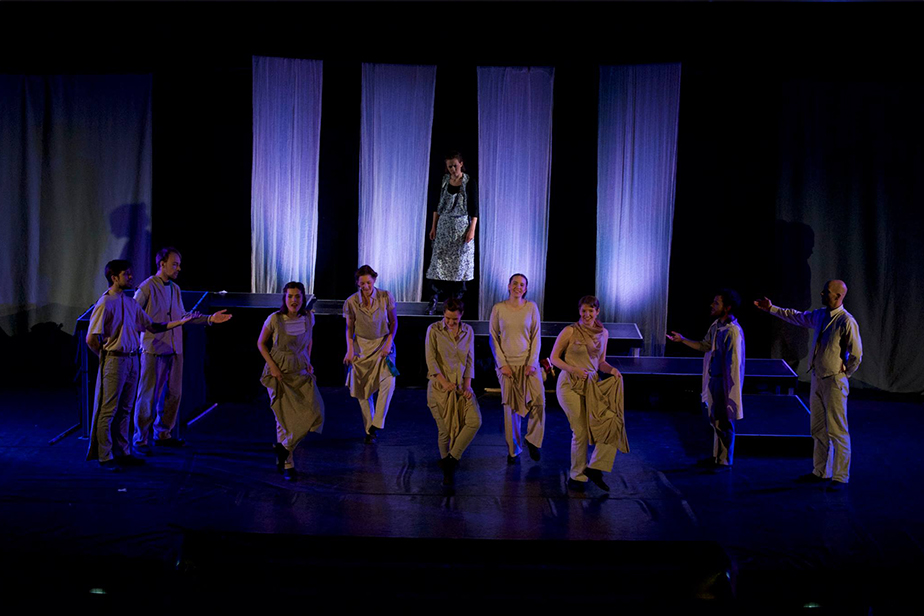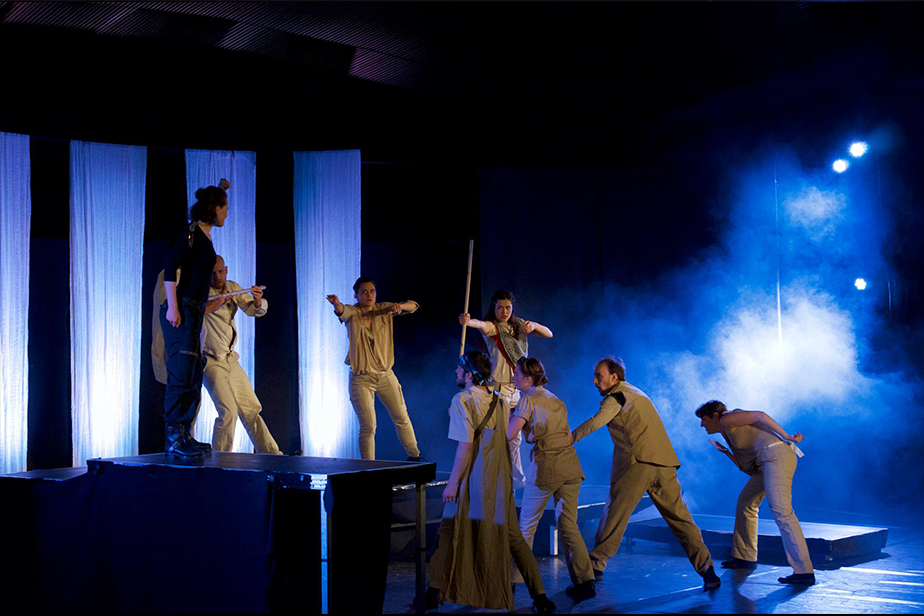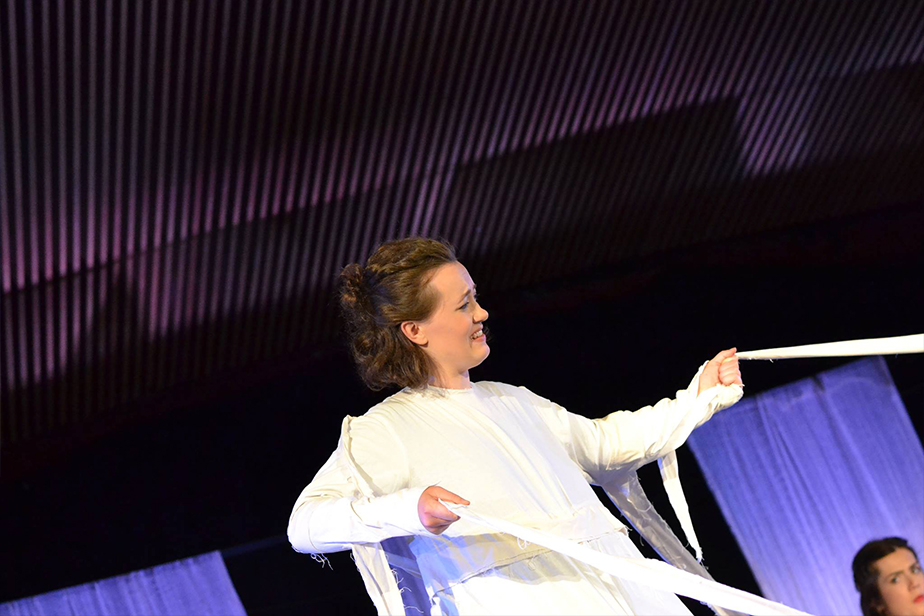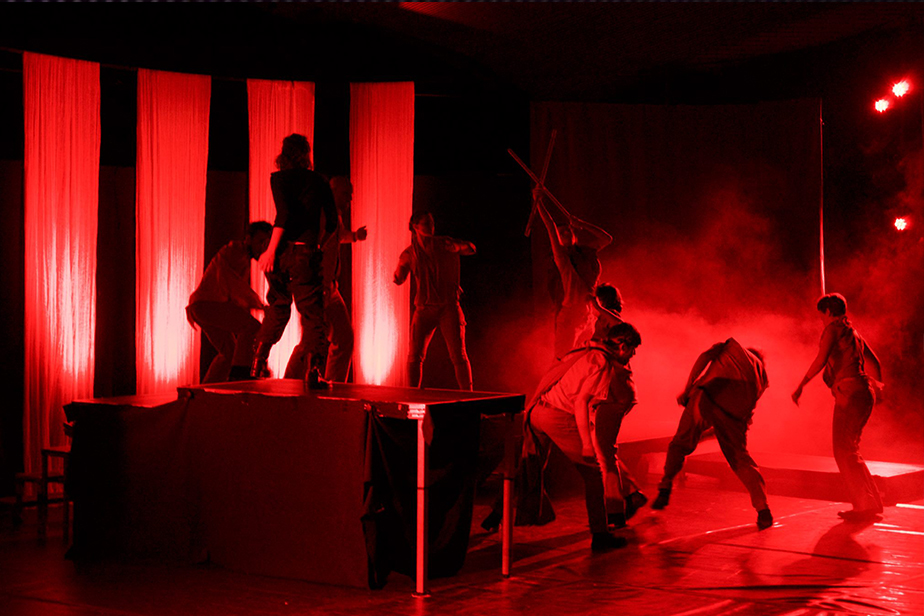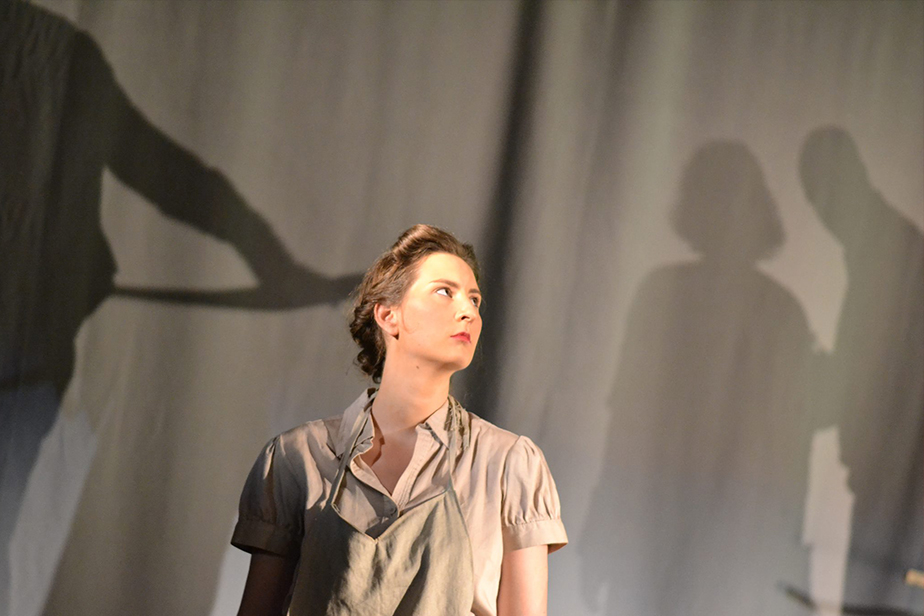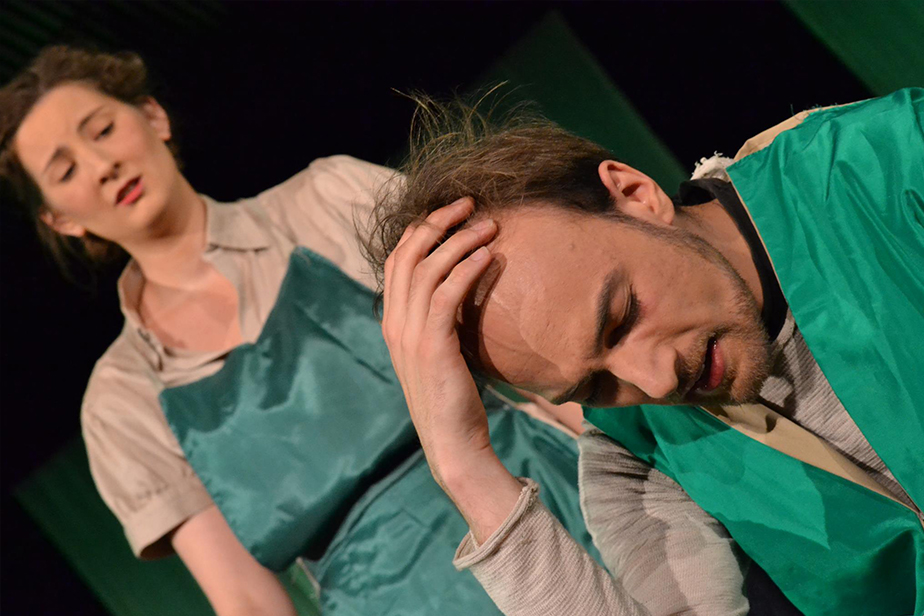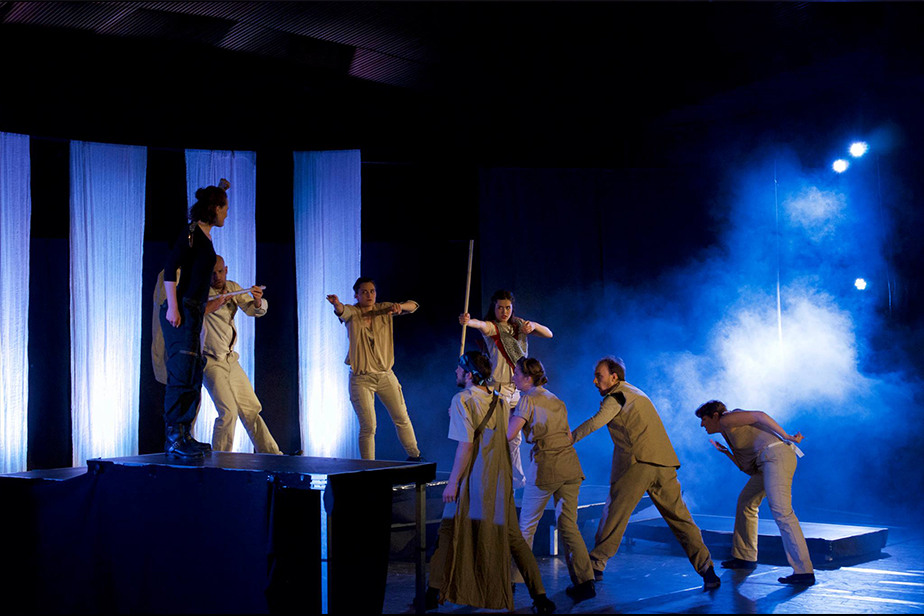Theater
Theater at the University is not merely an academic discipline dedicated to teaching and research in the field; it is also an activity pursued with impressive results: the directing program that ran from 1988 to 2003 at the Institute of Theatre, Music Theatre, and Film explored the potential of academic training for theater directors. And it did this with great success. Its graduates have made names for themselves in German and international theater.
In the 1960s, the student theater group Studiobühne won international prizes for their ambitious productions and received surprisingly rave reviews in the press. The Institute of English and American Studies has also been producing high-quality theater for almost forty years, to which cooperation between the University Players and the Schauspielhaus as well as regular performances in the Audimax attest.
The Studiobühne at Universität Hamburg
That little “at” is important. It is a reminder that the Studiobühne, which ran from 1959 to 1976, saw itself as an autonomous student theater group that also included non-students. The Studiobühne produced, among other things, Bertolt Brecht and Hans Henny Jahnn, engaging seriously, experimentally, and critically with the established professional theater of the day. A glance at its playbills gives a good idea of its artistic ambitions: you will find people who went on to become big names in German theater, film, and literature.Can you teach or study the art of directing?
This question dogged the one-of-a-kind degree program in directing founded jointly by Jürgen Flimm, the former artistic director of the state-funded Thalia Theater, and The Hamburg University of Music and Drama. The experiment was a resounding success. Seminars on theater alternated with first-hand glances at production methods used by contemporary directors, who were also integrated into the program as teachers. Students also had an opportunity to direct their own productions. In 1996, students worked with the Hamburg Kammerspiele theater to create the now annual young director’s festival Die Wüste lebt (The Desert Lives).Literature on stage
Student theater as an institutionally run program: in the 1980s, the English professor Dietrich Schwanitz initiated the University Players. Borrowing from the Anglo-American university theater tradition, the University Players was created not only to give students an academic foundation in literature and theater but to let them put their knowledge into practice. Since 1982, the ambitious University Players News has documented the group’s work, much of which has garnered awards. Both the articles, written by students, teaching staff, and outside authors, and the productions are in English.Studiobühne at Universität Hamburg
The Audimax was completely sold out for the one-off performance on 18 January 1963. Thanks to ticket sales, director Claus Peymann and his student ensemble were able to cover the prohibitive costs of the Hamburg symphony orchestra under Yngve Jan Trede, saving the team from financial ruin.Directing degree program
Sixpack, a long night of staged productions by all members of a single directing class, made an impact. In 1994, the NDR covered the event and conducted interviews with students. This clip shows Christian Schlüter and his final thesis project, a production of Agrippina.University players
Tennessee Williams drama, about the Italian-American widow Serafina delle Rose and her daughter Rosa, was one of the first plays produced by the student theater group. The recording made at the time has been digitalized for this exhibition. This year, the University Players can look back on seventy-eight productions.Contemporary witnesses
There was good reason to celebrate the fifth anniversary in 1963: there had been nineteen productions, 112 performances, and 55,000 audience members. The playbills contain articles about the student group’s pieces, goals, and members, including Heinrich Breloer, who later went on to become a film director; Fank-Patrick Steckel and Claus Peymann, who began their stage directing careers here; and Hans-Peter Korff, who made a name for himself as an actor.
International connections
Three of these arches formed part of the set design by Želimir Zagotta, who—like the guest director Ivo Selebić—hailed from Zagreb. The theater group met him during a guest production in Hamburg. The piece was the German premiere as well as the Studiobühne’s first contribution to the international theater festival of student theaters in Erlangen.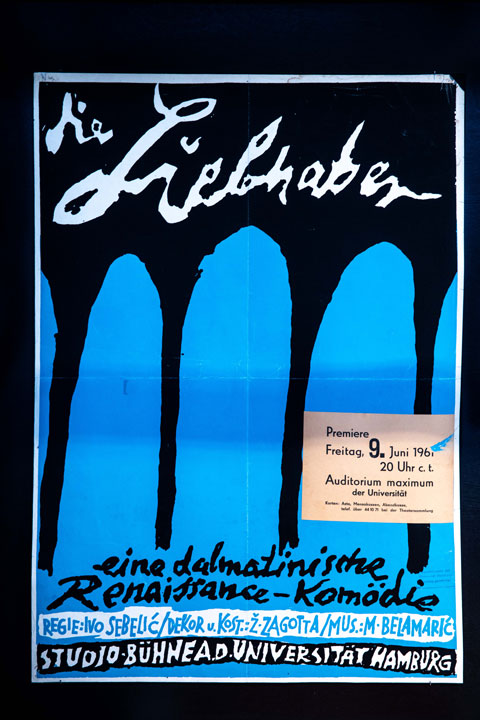
“Airy, floating, and ludicrous balloons”
This is how Die Welt described the five one-act shows produced on the Audimax stage in the spring of 1962. Surprisingly, only four of them made it onto the poster. A glance at the playbill reveals that the evening had been conceived to “test four directing novices.” One of them was Claus Peymann, who directed two of the shows.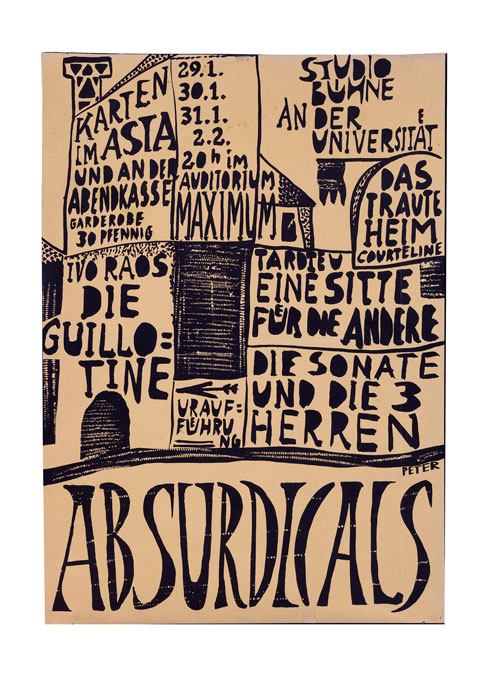
Success story
Despite the very short rehearsal period, Claus Peymann’s production of Wu was one of the Studiobühne’s most successful. It garnered first place awards at student festivals in Erlangen, Zagreb, and Nancy. Hans-Peter Korff (photo) gave an impressive performance as Wu and received lavish praise from the Zagreb press—“probably the most hymnal reviews that a student actor had ever received.” We have his proud father to thank for much of the memorabilia in this display case.R-rated
Studiobühne co-founder Rolf Wilken collected the “loveliest pieces on earthly pleasures” for his “modest homage to Aphrodite,” most of which he also set to music himself. The well-attended performances in Audimax—the first adult-only production—caught the attention of NDR. This record came out a year later.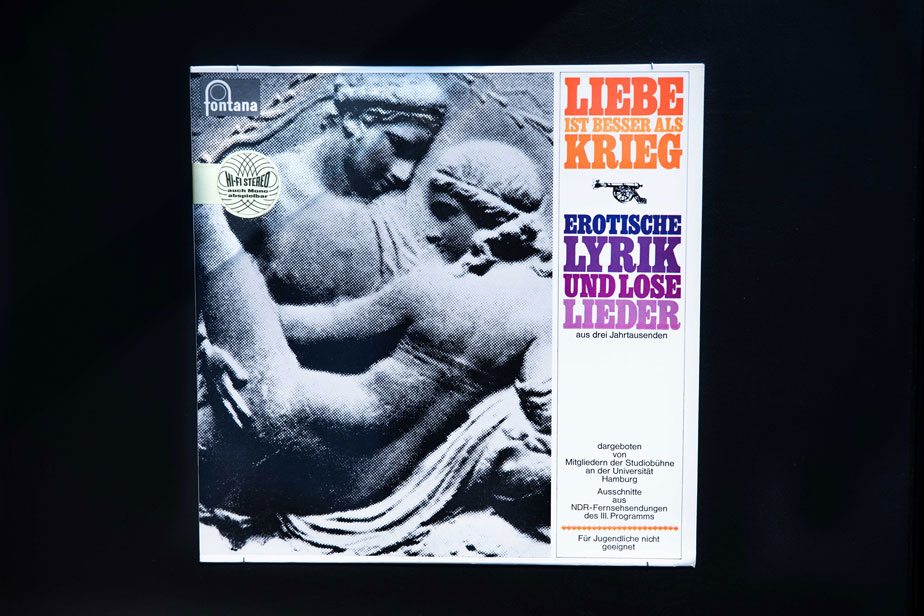
Falk Richter’s final thesis production
According to the press release, Richter’s “furious production [showed] people on the search for increasingly intense emotional kicks.” He quickly made a name for himself and is now one of the most important contemporary theater directors and playwrights. His career also stands for radical changes in the German theater landscape.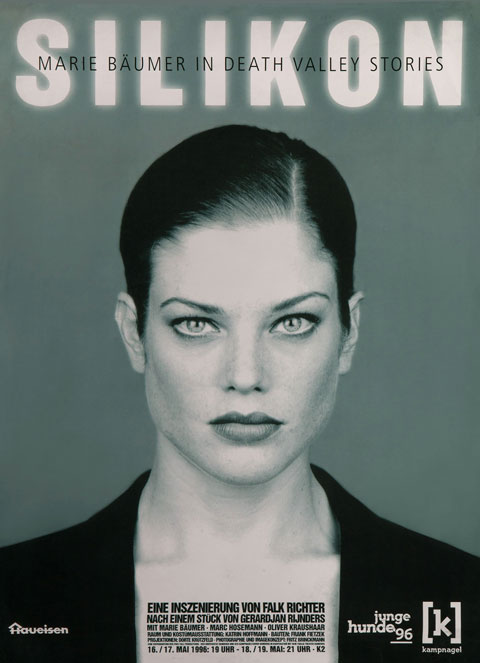
Hamburg Theater Network
It helped to have good connections to theater programs at other Hamburg universities. For example, this is how Richter met people like Marie Bäumer and Marc Hosemann, both of whom went on to fruitful acting careers. Richter still works frequently with the costume and set designer Katrin Hoffmann.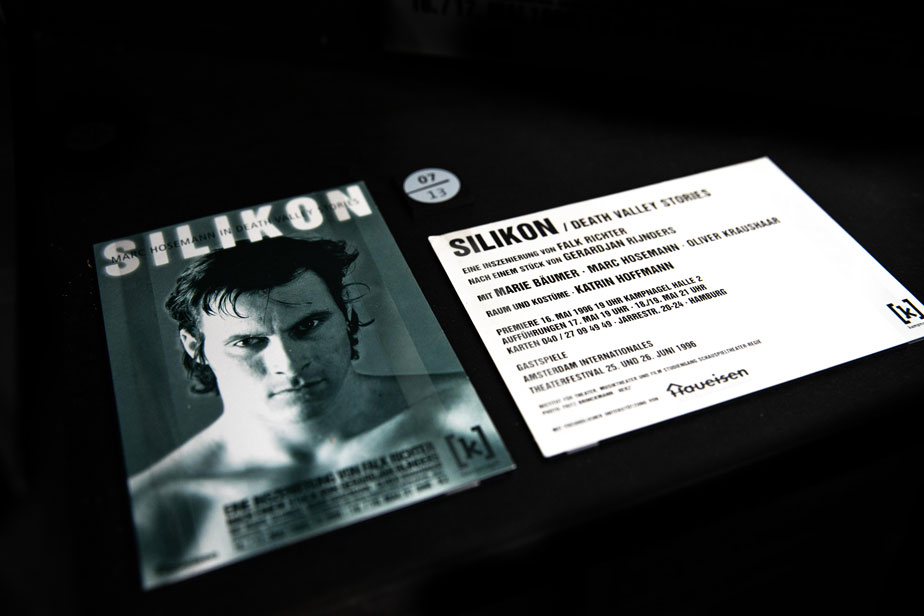
Original plays with contemporary themes
Although playwriting was not part of the program, Richter began to write and direct his own plays while still a student. He created these two in close cooperation with the actors Bibiana Beglau and Marc Hosemann (he wrote the script during rehearsals). Portrait. Image. Konzept reflected the modern media. It had a guest run at Thalia Theater.Theory and praxis
Richter wrote this term paper in a seminar taught by the theater scholar Manfred Brauneck. The Universität Hamburg professor played a seminal role in the development of the program, which was characterized by its combination of theory and practice. Falk Richter analyzed his own plays in connection with those of other authors.Christian Schlüter’s final thesis production
For his final project, Schlüter chose a 17th-century tragedy with a “plot taken straight out of Dallas.” The photo shows him and set designer Katrin Hoffmann (this was also her final project) amid the ensemble in full make-up. Initially a director’s assistant and free-lance director, Schlüter became the senior artistic director and in 2018 the head of the drama division for the Bielefeld Theater.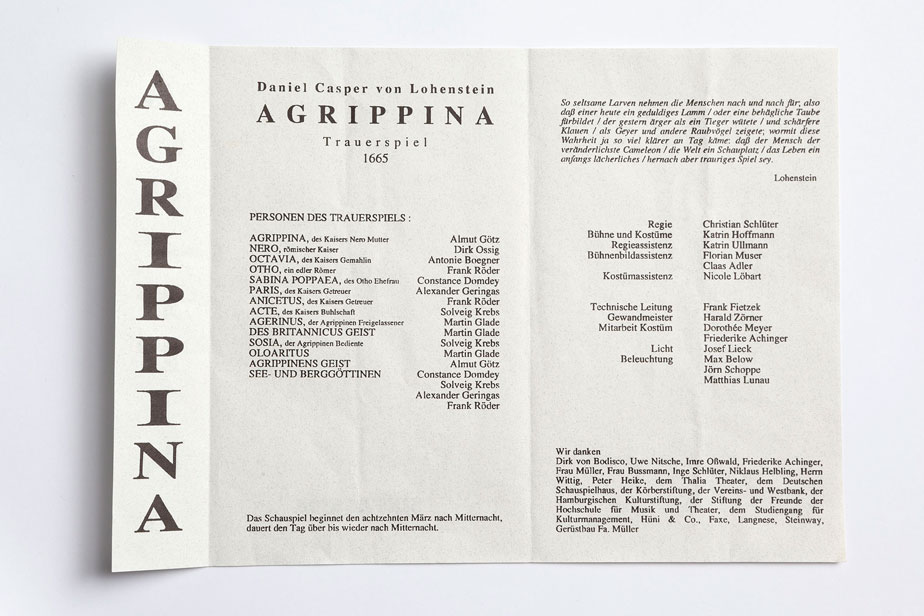
Scenes from Richard III and Macbeth
To attract greater attention, six members of the Sixpack directing class banded together to show their current work at jointly organized theater evenings. They used the converted Zeisehallen warehouse. This was also where the Institute of Theatre, Music Theatre, and Film found a home. These photos of Schlüter’s production show the crown and sword in action.Enviable conditions
Students were chosen for the program in a multi-stage selection process. A maximum of ten students per graduation class were admitted. This was an ideal size for the training of directors but due to the costs at a University otherwise bursting at the seams it was also controversial.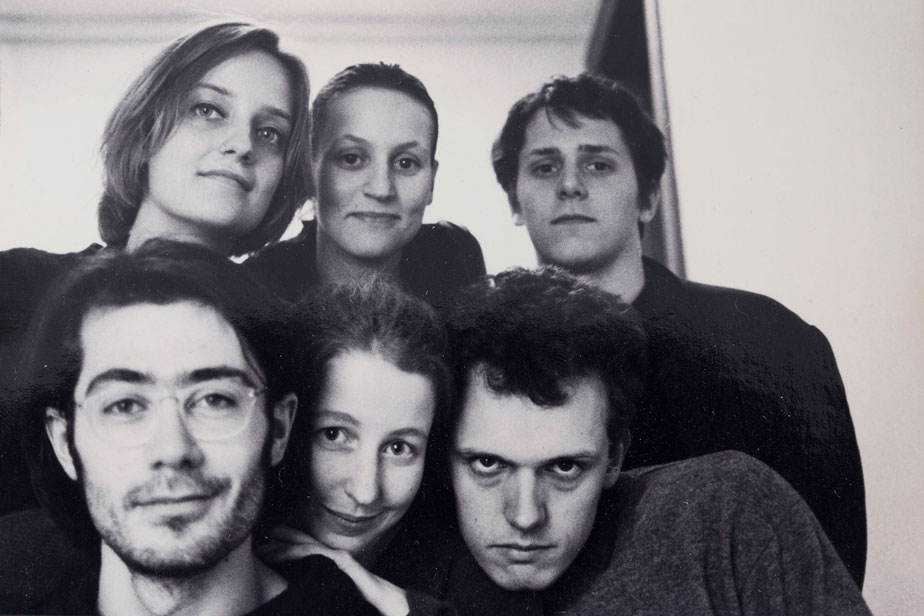
What is directing?
As artistic director of Thalia Theater, Jürgen Flimm was a living, breathing connection to the world of theater; he was also, however, a busy man and often absent. These records provide a glance at Flimm’s topics and methods.Final thesis project by Sandra Strunz
This “grotesque, comic play” about the life of the outsider Schulthess was part of the Junge Hunde program for young directors at Kampnagel—at the time, a completely new type of event. Strunz continues to stage her work, often inspired by prose texts, as a free-lance director in Germany and abroad.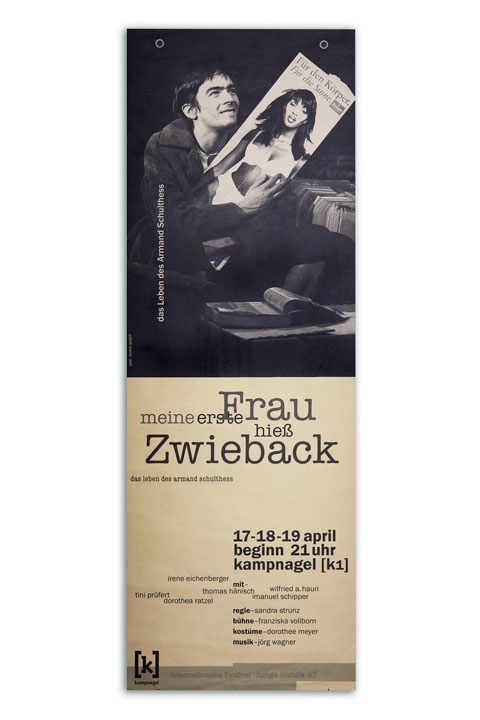
Scenes from the life of an outsider
The leaflet also shows a sketch of the eighteen-thousand-square meter encyclopedic garden of Armand Schulthess. Schulthess wrote phrases and sentences like those surrounding the illustration on tin plates which he then arranged thematically in his garden. In her production, Strunz had different actors play the loner; this photo shows Imanuel Schipper in the role.Unusual format
The playbill is not much larger than one of the tin plates from Armand Schulthess’ garden. It contains information about the ensemble as well as Schulthess’ life and a few of his garden texts.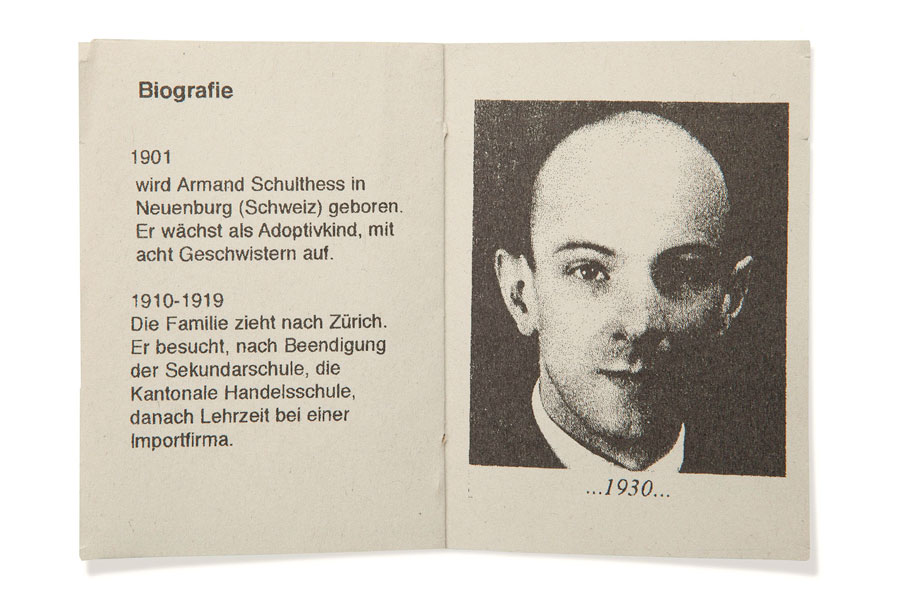
Die Wüste lebt!
Die Wüste lebt! (The Desert Lives!) is the title of a festival showcasing young directors and actors. Strunz presented her interpretation of Käthchen here. Strunz was also one of the festival’s co-founders, alongside her directing program classmates. This confident generation of theater artists no longer wanted to sit on the sidelines as directing assistants—they wanted to put on their own work.Positive press
The press showered praise on Strunz’s final thesis project. The Hamburger Rundschau called the young director a “real discovery,” the tazlauded her and her ensemble for their “keen sense of their figures’ amiable fatalism.”Three-in-one
At the Easter Festival of Full-Length Plays, Joan of Arc reaped an astounding nine awards, including for costumes and make-up. This jacket served three different characters: the version in the display case was worn by the guard; the front part was then flapped back over the shoulders to create Joan’s father’s signature green costume. It could also be turned inside-out, becoming a beige uniform for members of the general population.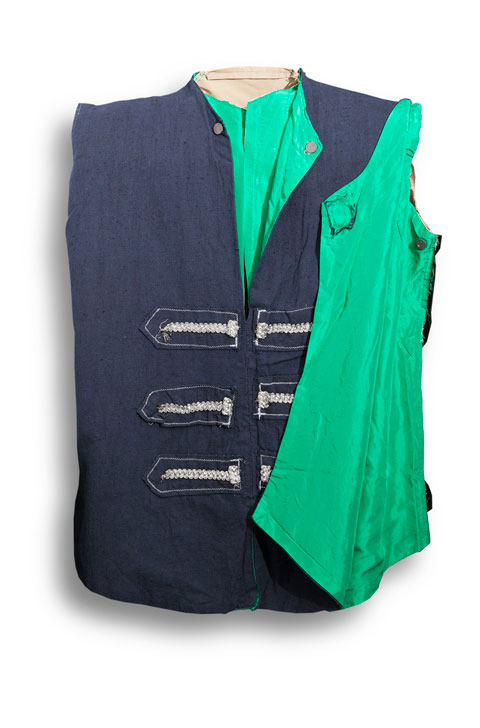
A multi-purpose stick
Terminally tight budgets require simple means. You can buy this wooden stick in any hardware store. On the stage, it is transformed into a bow and arrow, a scroll, a trumpet, or a sacred sword and, along with other wooden sticks, Joan’s stake and funeral pyre.St. Joan’s journey to Orleans
University Players’ member Simon Deggim wrote and directed the play about the French national heroine Jeanne d’Arc, leading a cast of ten. This shows the wooden stick as a sacred sword; the actor below left is wearing the reversible jacket.IKE—final curtain cameo
Ike had his first cameo in 1987 when dinner was served in the production of George Bernard Shaw’s Arms and the Man. The following year, the lobster appeared in Shakespeare’s Twelfth Night and has since then graced the stage as a kind of lucky charm. Ike now only appears, however, on the final night; there are no plans to end the crustacean’s illustrious career anytime soon.
Topical theater
Shakespeare is a University Players staple, but the group also produces contemporary plays. Masterpieces, by the British playwright Sarah Daniels, takes a stand against pornography and violence against women. A panel discussion was held following the performances.Guest performance in Altona
The Tempestwas also performed six times at the Altonaer Theater. The long list of participants reveals how much time and commitment goes into preparing a production. One of the University Players’ guiding principles is that any and everyone can join—no experience required, whether you want to try your hand at acting, costume design, or directing.